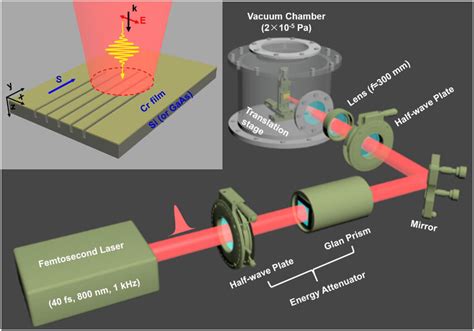The world of technology never ceases to amaze, and the concept of using femtosecond lasers to create 3D midair plasma displays that you can actually touch is a testament to human ingenuity. As comments from intrigued users highlight, this technology opens up a realm of possibilities, sparking both excitement and caution among enthusiasts.
One user pointed out the potential practicality challenges associated with femtosecond lasers due to their high cost, especially in the medical field. The steep price tags on these lasers could be a significant barrier to widespread adoption, limiting their accessibility for commercial applications. However, the conversation doesn’t stop there; intriguing insights suggest that engineering advancements could pave the way for more affordable, mass-produced solid-state versions of these lasers, potentially unlocking their capabilities for broader use.
Safety concerns also loom large in discussions around femtosecond laser technology. From the risk of equipment failure leading to potential hazards like fires to the noise levels generated during operation, users are quick to highlight the need for stringent safety measures when working with such advanced equipment. The delicate balance between innovation and safety remains a focal point in the development and deployment of these cutting-edge displays.
The convergence of technology and artistry is evident in the potential applications of femtosecond laser displays, not just in civilian spaces but also in military contexts. Comments pointing towards military patents for plasma decoy projectors showcase how this technology is not just confined to research labs but has real-world implications in defense systems. The idea of jet-mounted plasma projectors being used for military operations adds a layer of intrigue to the discussion.
As with any groundbreaking technology, there are reminiscences of past ventures like the IO2 Heliodisplay, which dazzled audiences with its holographic-style displays. However, the path to mainstream success for such innovations is riddled with challenges, from cost control to brightness optimization. Despite the allure of futuristic displays, the practicality of these technologies often dictates their fate in the competitive tech landscape.
The evolution of display technologies, from failed experiments to potential game-changers, provides a glimpse into the complexity of innovation. While some projects fade into obscurity, others pave the way for future advancements. As users reminisce about past endeavors like transreflective LCDs and adam tablets, the cyclical nature of technological progression becomes apparent, with each innovation building upon the legacy of its predecessors.
The interplay between user curiosity and technical complexities underscores the intricate nature of femtosecond laser displays. From concerns about eye safety to the practical challenges of creating scalable and efficient systems, the dialogue surrounding this technology reflects a mix of optimism and realism. While the allure of futuristic displays is undeniable, the journey towards their widespread adoption is bound to be a nuanced one.
In a world where technology continues to push boundaries, the intersection of femtosecond lasers and 3D displays offers a glimpse into the possibilities that lie ahead. Whether it’s the prospect of touchable plasma or the cautionary tales of safety risks, the ongoing dialogue around this technology signals a shift towards a future where innovation and responsibility walk hand in hand. As we navigate the realm of cutting-edge displays, one thing remains clear – the journey towards the next frontier of visual technology is as thrilling as it is challenging.


Leave a Reply